BLOG

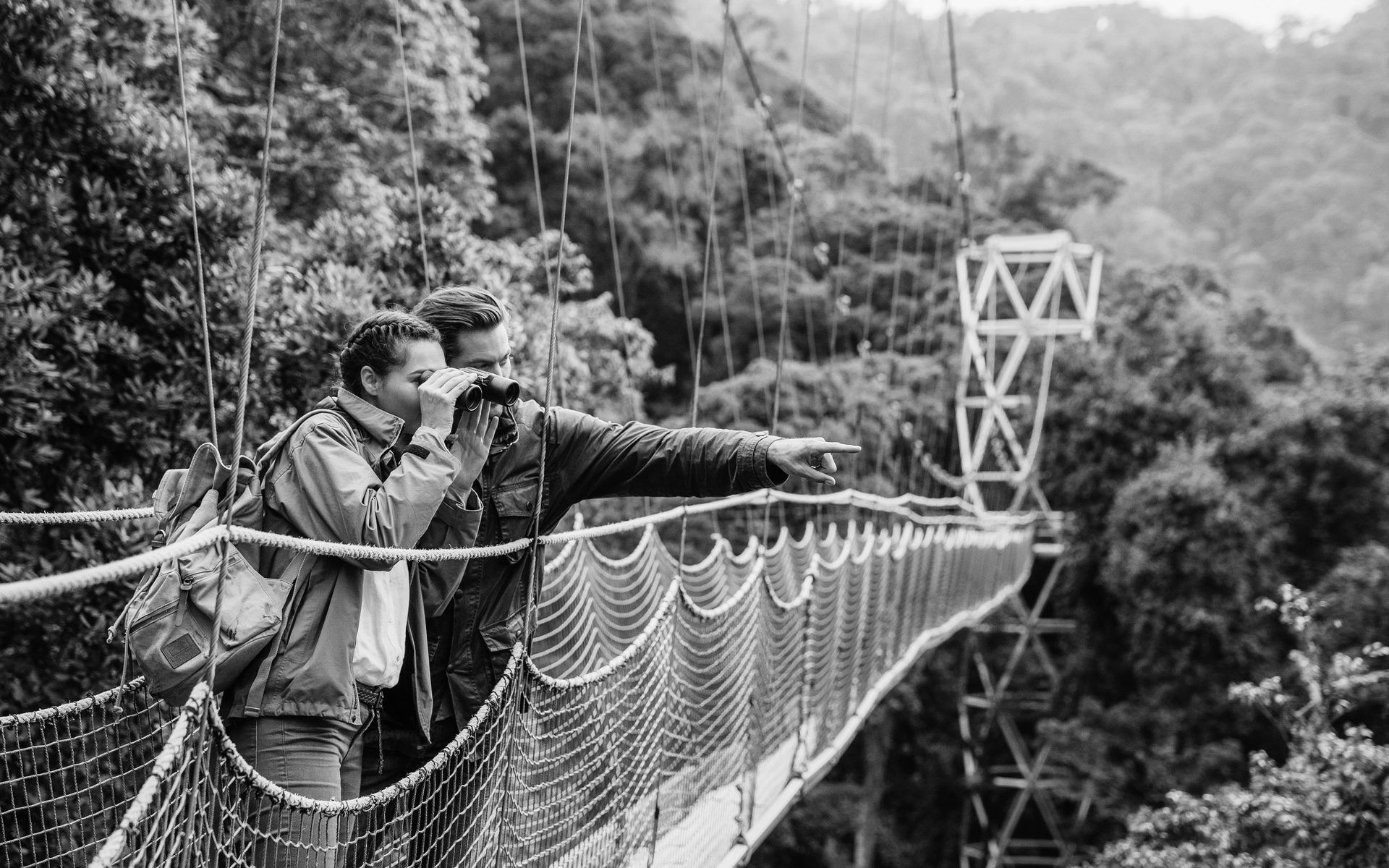
The canopy walk in Nyungwe National Park is one of the iconic experiences awaiting you on a Rwanda tour. A canopy walk in Nyungwe Forest National Park is such a unique experience and the first of its kind to be introduced not just in Rwanda but in the entire East Africa. During the guided canopy walk tour, visitors get a chance to embark on a guided walk through the suspended canopy walkway. The Nyungwe canopy walkway is set 70 meters below the forest floor and extends 160 km long taking visitors approximately 2 hours to have a round hiking journey. What to see on a canopy walk in Nyungwe The canopy walk in Nyungwe allows you to explore a range of species including birds, primates, and the lush rainforest canopy. Nyungwe is endowed with 13 primate species and a good population of them can be spotted during the guided canopy walk. The park also offers refuge to 100 species of trees, 310 species of birds, and other faunal species. Where does the canopy walk begin? The canopy walk in Nyungwe begins from the Igishigishigi trail at the Uwinka reception area/center. Your expedition begins with registration and briefing. Starting your hike from Uwinka takes you about 2 hours. Visitors will be allocated an experienced park ranger guide to lead them through the entire canopy walk journey. Only visitors above 6 years can engage in the guided canopy walk adventure. Children of 6 years should be escorted by adults. How much is the canopy walk in Nyungwe? The cost of a guided canopy walk in Nyungwe varies depending on the visitor category. Foreign residents pay USD 20, international visitors 40 per person, and Rwandese or East African citizens are charged USD 5. The park entrance fees also vary as follows; international visitors USD 100, foreign residents in Rwanda (East Africa) USD 60, African citizens USD 60, and East African citizens USD 10. Park entrance fees for children differ as follows; international visitors children of 6 to 12 years pay USD 50, foreign residents in Rwanda (East African child) 6-12 years USD 30, African citizen outside East Africa 6-12 years USD 30, then Rwanda/East African citizen child of 6-12 years pays USD 5. Only children below 6 years do not need to pay park entrance fees while those above 13 fall in the category of adults. Canopy walk schedule. The daily schedule of the canopy walk experience in Nyungwe National Park ranges as follows. The morning session begins at 8:00 am to 10:00 am then the afternoon session begins from 1:00 pm to 3:00 pm. The day canopy walk session begins with a Uwinka reception with the briefing. From Uwinka, you can move to the Igishigishigi trail where you can connect to the suspended canopy walkway. Is a canopy walk hard? The Nyungwe canopy walk adventure is a bit easier and fun-filled. It accommodates all kinds or levels of fitness. The only mountainous landscape to encounter is when connecting to where the canopy walk starts but it is also manageable. The walk involves navigating via the suspended walkway set about 70 meters from the forest floor. What to take for a canopy walk adventure in Nyungwe The items to carry for a guided canopy walk adventure in Nyungwe Forest National Park Rwanda include a waterproof daypack, waterproof hiking boots or shoes, a camera, a rain jacket or poncho, insect repellents, a medical kit, long-sleeved shirts, long trousers, a sweater, and sun hat. When to go to enjoy the Rwanda canopy walk experience The guided canopy walk tour can be planned and done at any time of the year. But the best time of the year to experience the most of a canopy walk is during the dry months when there is low or no rainfall and the trails are easier to navigate through. On the travel calendar of Nyungwe National Park Rwanda, the dry season occurs from June, July, August, September, and then December, January to February. It is also possible to travel to Nyungwe National Park to engage in numerous experiences during the wet or rainy months. The rainy months often start around March, April, May, October, to November. The disadvantage with the wet or rainy months is that heavy rains are experienced thus posing a challenge when you are navigating through the trails in Nyungwe National Park. Other activities to do in addition to canopy walking Chimpanzee tracking Chimpanzee tracking in Nyungwe is a perfect addition to a canopy walk experience on a Rwanda safari. Nyungwe is home to a total of about 500 chimpanzees and is notably, an excellent destination to visit to track these primates in the wild. On a chimpanzee trek, expect to explore other primates including colobus monkeys, l’hoest monkeys, red-tailed monkeys, olive baboons, mangabey monkeys, vervet monkeys, and more. Birding An addition of birding on your Rwanda safari plus a canopy walk is a great deal. Birding allows you to embark on a journey to explore the different bird species in Nyungwe National Park, home to over 310 bird species. The birds of interest to explore during birding tours in Nyungwe include Rwenzori batis, yellow-eyed black flycatchers, dusky crimson wing, Rwenzori nightjars, Archer’s robin-chat, mountain sooty boubou, Great blue turacos, stripe-breasted tit, Kungwe apalis, and black saw-wing. Other birds to identify on birding tours in Nyungwe include regal sunbird, purple-breasted sunbird, Albertine owlet, red-faced woodland warblers, Congo-bay owlet, red-eyed dove, rameron pigeon, speckled pigeon, lemon dove, and dusky turtle-dove. Nyungwe is also most popular for its rewarding colobus monkey tracking, nature or forest walks, and community or tea farm tours in the surrounding areas. Where to stay Available safari lodges to book for overnight stays in and around Nyungwe National Park range from budget to luxury. They include Gisakura Guesthouse, Nyungwe Nzizi Eco-Lodge, Nyungwe Top View Hill Hotel, Golden Monkey Hotel, Emeraude Kivu Resort, One&Only Nyungwe Lodge. How to get to Nyungwe National Park Nyungwe National Park is accessible by road from Kigali about 6-7 hours’ drive via the Southern Province. By air, you can use a domestic flight to Kamembe International Airport/helicopter tours from Kigali to Nyungwe Lodge. When you land at Kamembe Airport, you will drive for 40 km to Nyungwe Forest Lodge.
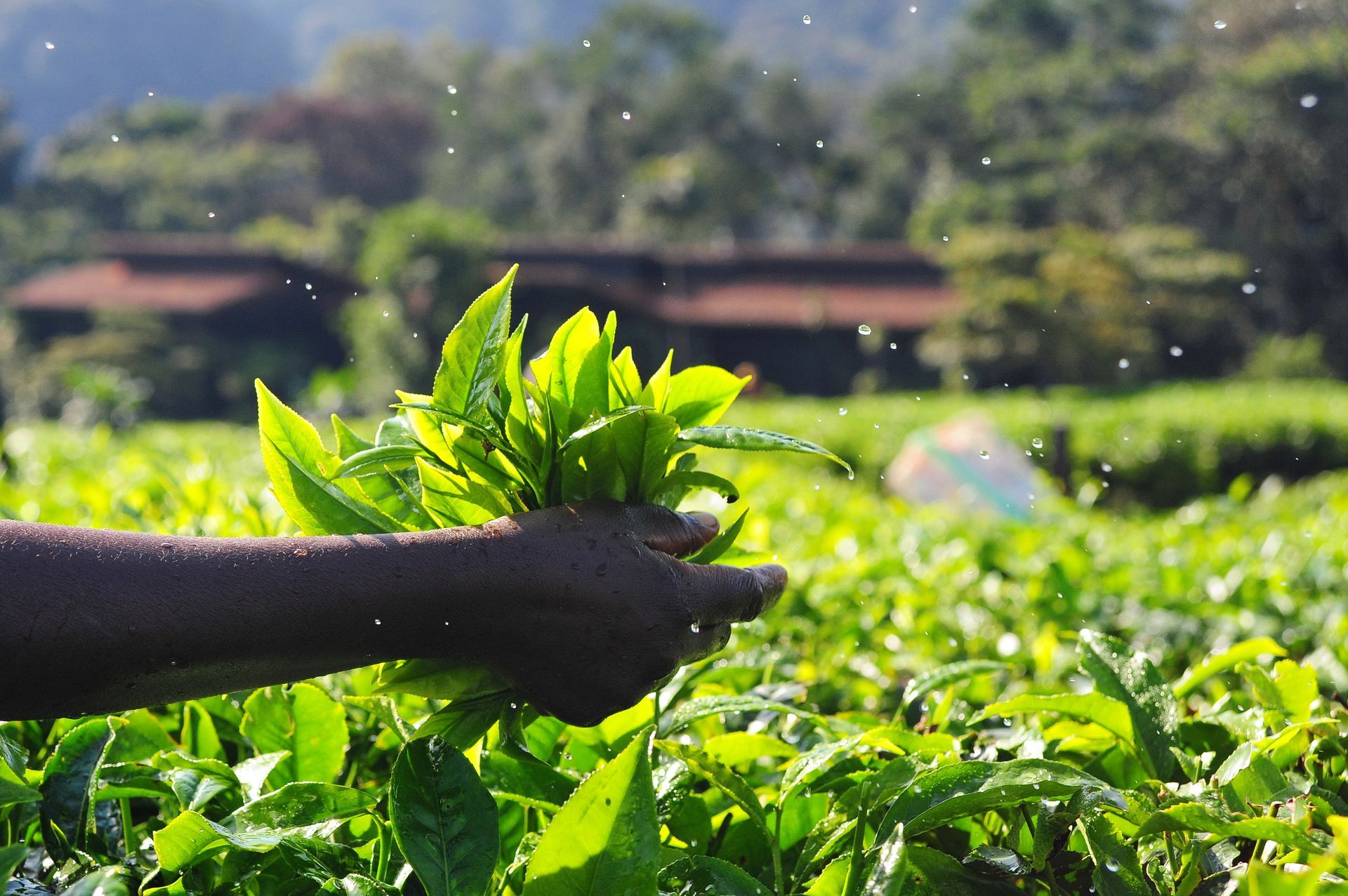
Discover the most rewarding hiking trails in Nyungwe Forest National Park, a 970 sq. km rainforest-dominated protected area in Rwanda. Located in the Southern Province of Rwanda, Nyungwe National Park lies at an altitude of 3000 meters and features among the oldest tropical forests in Africa. Nyungwe extends to the border with Burundi and is close to the Kibira National Park and is also bordered by Congo and Lake Kivu in the western part of the country. The different hiking trails in Nyungwe each reward nature enthusiasts with incredible encounters of floral and faunal dwellers in this lush protected area. Nyungwe Forest National Park trails offer a complete immersion into the jungle with nature lovers guaranteed of great surprising encounters of the park-endowed fauna. Here is a detailed list of amazing hiking trails to explore on the Rwanda safari in Nyungwe National Park. Ngabwe trail The Ngabwe hiking trail is one of the interesting trails worth exploring on a Rwanda tour in Nyungwe Forest National Park. It is a perfect trail to explore by nature enthusiasts and what is remarkable about it is that it ushers visitors to Mount Ngabwe. Hiking the Ngabwe trail involves conquering a 4.7 km long enriching trail leading you via the Kitabi tea plantations and some sections of Nyungwe Forest. As you embark on a guided nature walk through the Ngabwe trail, expect to come across many primates in Nyungwe Forest. The different primates to expect to encounter on a guided hiking adventure along the Ngabwe trail include gray-cheeked mangabey monkeys, l’hoest monkeys, chimpanzees, black and white colobus monkeys, etc. Kamiranzovu marsh trail The Kamiranzovu trail introduces you deep into the caldera depression in Nyungwe Forest National Park. It is a 6 km long trail and offers a bit of challenging hikes taking visitors about 3 to 4 hours. While on the Kamiranzovu marsh trail, expect to come across different birds including the Grauer’s rush warblers and lush vegetation. Visitors who desire hiking through this begin their journey from the Uwinka reception. Igishigishigi trail The Igishigishigi trail is a 2.4 km extensive trail about a 1.5-hour hiking trail. It is one of the trails you can easily explore and offers great views of the canopy walkway. Hikes through this trail can be done in the morning and afternoon. This trail is located at the elevation range of 2295 to 2450m. Uwinka trail Uwinka hiking trail is 10.5 km translating to about 8 hours. Along Uwinka trail, expect to enjoy great views and expect to encounter of some of the interesting species. Hiking through Uwinka requires a bit of fitness level to have a complete round journey. Irebero trail Irebero nature trail in Nyungwe National Park is 3.4 km and takes visitors about 3 hours to enjoy a complete hike. This hiking trail allows you enjoy views of Lake Kivu and border areas. Bigugu hiking trail Bigugu is one of the hiking trails in Nyungwe that are hard to hike but rewards hikers with great encounters. The hikes through Bigugu involve conquering the high elevation of 2367m and the trail is 13.2 km about 6 hours round hike. Bigugu hiking trail is ideal for birding and bird enthusiasts have a lot of birds to spot. The likely birds to be spotted along the Bigugu trail include the red-collared babblers, red-collared mountain babblers, Archer’s robin chat, Olive & Elliot’s woodpeckers, Rwenzori turacos, and barred long-tailed cuckoos. Other birds include white-headed wood hoopoe, stripe-breasted tit, and white-bellied robin chat, etc. Umugote hiking trail Umugote is 3.6 km long and takes its name from a Syzgium tree. Hiking through Umugote takes about 3 hours and is an ideal primate and birding trail. The hikes through Umugote usher visitors via the scenic valleys where a myriad of forest species can be encountered. Isumo waterfall trail Isumo fall trail is 10.6 km translating to about 4 hours round hiking experience. Isumo is set at the elevation of 1770 meters and 1940 meters. Along this trail, expect to come across some of the ferns, birds, and monkeys. Imbaraga trail Embarking on the Imbaraga hiking trail involves exploring a 10 km long trail about 6 hours hiking journey. This nature trail takes its name from the Kinyarwanda word which translates as strength and is evidenced by the difficulty of hiking through it. Imbaraga trail hikes start from the Uwinka reception center and introduce you to enriching spots to find various fauna. Congo Nile divide trail. The Congo Nile divide lies along the Southern end of the park and connects parts of Nyungwe and Kibira National Park in Burundi. This extensive trail extends to Butare-Cyangugu road approximately 7 km west of Uwinka. It is an enriching hiking trail that brings you up close with the park’s diverse fauna and avifaunal species like the Kivu ground thrush, Rwenzori turacos, and red-collared mountain babblers. Karamba trail Karamba is a favorite birding trail in Nyungwe and is notably one of the easiest trails to explore on the Rwanda safari. Hikes through Karamba begin from Karamba main road and expect to take 3 hours round hiking journey. The Karamba trail is set at an altitude of 1935 meters and 2030 meters. Along the Karamba trail, there are colorful orchids, Dent’s monkeys, and giant trees to explore. Muzimu trail Muzimu is 5.2 km and expect to take 3.5 hours to have a round hike. Muzimu hiking trail offers moderate hiking adventure and visitors get to navigate via the lush vegetation cover featuring pine forests, eucalyptus trees, shrubs, and wildflowers. On the Muzimu trail, expect to enjoy great views of Lake Kivu and the surrounding Virunga Mountain ranges. Rukuzi Rukuzi is one of the amazing hiking trails in Nyungwe. It is a 9 km long hiking trail and takes about 5 hours to have a complete hike. Along the Rukuzi trail, expect to come across some of the unique primates including chimpanzees, and do not miss the breathtaking views of Nyungwe Forest. Umoyove trail Umoyove hiking trail takes about 2-3 hours for you to have a round hike. The hikes through this trail allow you to explore the scenic waterfall, flowers, and mahogany trees. It is a 5.5 km extensive hiking trail and offers the shortest hikes preferably the ideal spot for hikers who do not want to spend long hours walking.
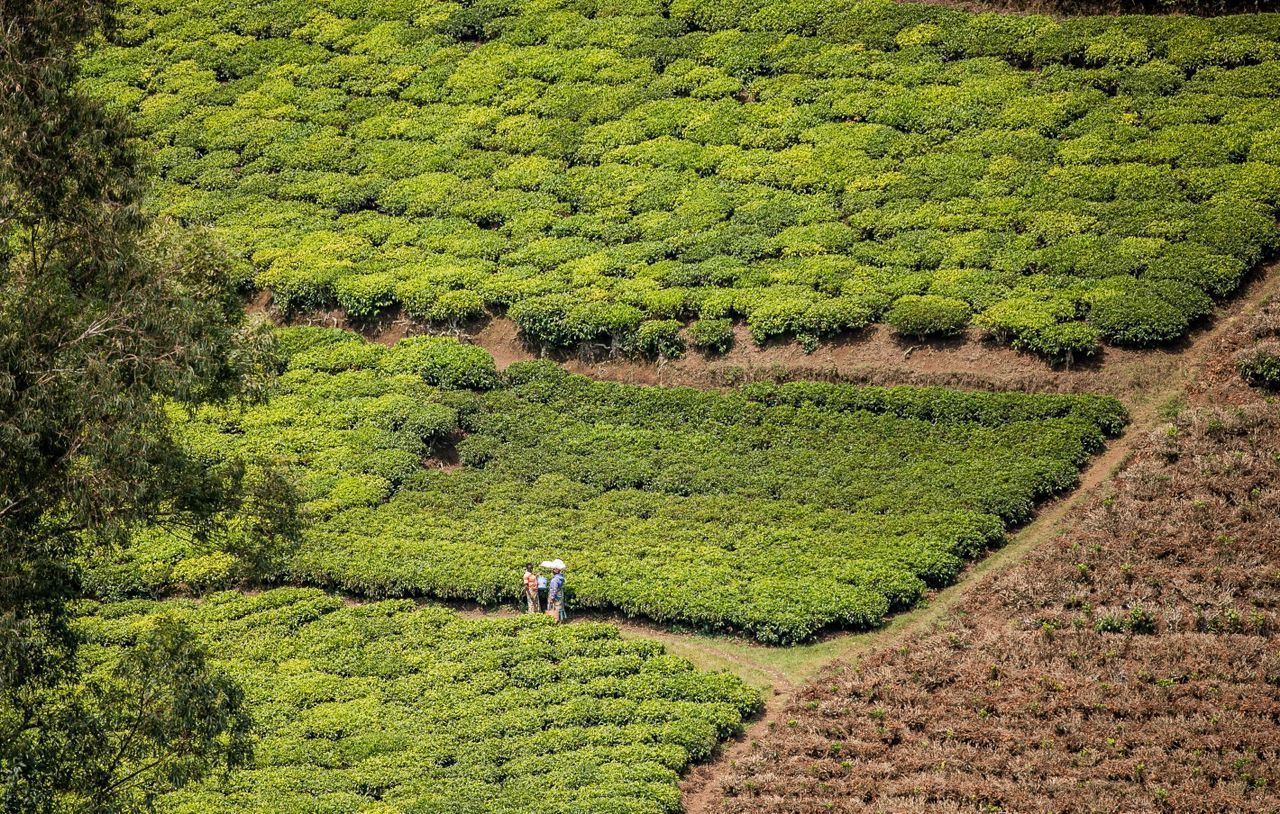
Cultural tours in Uganda: Explore the unique cultures, traditions, norms, practices, and everything else that makes Uganda a melting pot of cultures. Uganda cultural tours offer visitors a great chance to learn more about Uganda’s culture and heritage. The cultural tours in Uganda are the perfect alternative to explore not only the traditions, cultures, and practices, but also get a chance to visit the historical/cultural sites, get entertained by locals, and have a taste of delicious Uganda cuisines, etc. On Uganda cultural safaris, expect to interact with the Batwa pygmies (Batwa trail), Karamojong community/Manyatta, Kasubi royal tombs, museum, IK cultural experience, etc. Cultural Experiences in Uganda The Batwa trail/cultural experience Batwa cultural trail or experience offers visitors a great chance to interact with the Batwa pygmies. The Batwa pygmies lived in Bwindi Impenetrable Forest and Mgahinga Gorilla National Park. Today, they reside adjacent to the two parks where visitors can interact with them, explore their ancient traditions, and practices, and also enjoy captivating dances. The Batwa pygmies were traditional hunters and gatherers who spent 1000s of years in the jungles. They lived peacefully with gorillas in the jungles and other wildlife till the 1990s when they were evicted for Bwindi and Mgahinga to be gazetted as National Parks. The primary reason for the establishment of the two protected areas was mainly to protect wildlife habitat, and the endangered mountain gorillas as well as other wildlife. The Batwa cultural tour/visit is a perfect addition to the gorilla safari experience. It can be done after or before the gorilla trekking adventure in Bwindi National Park or Mgahinga National Park. Karamojong cultural experience The Karamojong cultural/community tour is a remarkable cultural excursion providing visitors a chance to explore more about the Karamojong people and their cultures. The Karamojong community visit involves exploring the Manyatta, and learn the different traditions and cultures of these nomadic pastoralists. The IK cultural experience The IK cultural experience allows you to explore more about the IK people, their traditions, cultures, and practices. Accessing the IK community involves conquering the great heights of Mt. Morungole in Kidepo Valley National Park, Northeastern Uganda. The IK are believed to have their origin from Ethiopia and today, they are interesting people to interact with after or before game safaris in Kidepo. Cultural tours in Kampala (Central Uganda) Around Kampala, there are multiple options offering incredible cultural experiences. On a cultural tour in Kampala, expect to explore different sites including Buganda Kingdom, Kasubi royal tombs, visit Entanda community experience, Ndere cultural center, enjoy a delicious luwombo, Nakayima tree shrine Mubende, Uganda museum, SSezibwa Waterfalls, and more. Additional cultural sites in Uganda include Igongo Cultural Museum, Nkokonjeru tombs, Bigo bya Mugenyi, Mparo tombs, Karambi tombs, Mpambire Drum Makers, and Kabaka Palace. Cultural tours at Queen Elizabeth National Park Adjacent to Queen Elizabeth National Park, there are multiple places to visit for a cultural experience. They include Leopard Village, Kasoga community experience, and more. A cultural tour at Queen Elizabeth National Park is a great chance for you to explore and experience the distinct cultures and traditions of the Bakonjo, Basongara, and Banyabindi. In addition to experiencing the unique cultures and traditions in the local communities adjacent, there are multiple activities to enjoy in Queen Elizabeth National Park. The park is an excellent destination to enjoy a guided game drive, a launch cruise, birding, chimpanzee tracking, lion tracking, and many others. Imbalu cultural dances Imbalu cultural experience takes place every even-numbered year around August or December. It is a traditional circumcision event where young boys are initiated to adults. The Imbalu cultural ceremony always occurs every 2 years and is a cultural event conducted by the Bagisu in Eastern Uganda. It is usually conducted in places like the Mutoto cultural site near Mbale city. During the Imbalu ceremony, several other activities are also incorporated to make it a colorful event. While on a cultural tour in Mbale, there is the possibility to connect to Mount Elgon National Park to enjoy thrilling mountaineering adventures, hike to the Sipi Falls, abseiling, trout fishing, and coffee farm tours. Cultural tours around Lake Mburo National Park in Kiruhura Visitors on wildlife tours in Lake Mburo National Park can also consider adding cultural experience in the adjacent communities to the park. A cultural tour at Lake Mburo Park allows you to explore more about Ankole and Bahima cultures. Expect to engage in hands-on experiences like hand milking, grazing animals, and more. Wildlife tour experience in Lake Mburo National Park involves exploring wildlife including Defessa waterbucks, zebras, impalas, hyenas, buffaloes, leopards, hippos, elands, topis, and giraffes. Over 350 bird species also reside in the different habitats of Lake Mburo Park including the red-necked spur, brown parrot, crested francolins, trilling cisticola, black-billed barbet, cheeky bronze-tailed starling, and others. In addition to cultural experiences, Lake Mburo National Park also provides the best of guided game drives, boat cruise, sport fishing, bird watching, horseback ride tours, and nature walks.
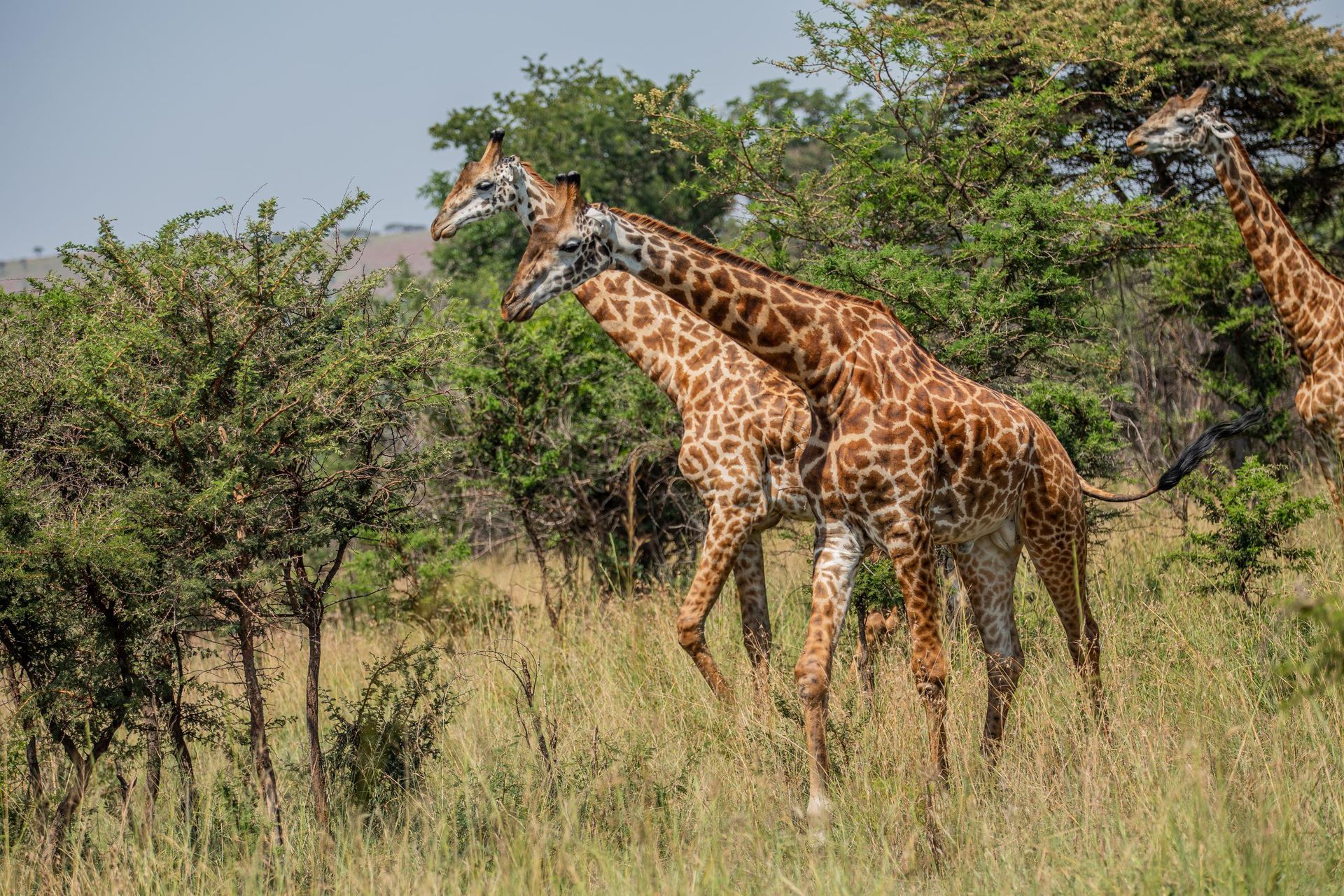
Are you considering a trip to Rwanda but have concerns about recent events involving Belgium? We're here to reassure you that Rwanda remains a safe and welcoming destination for travelers from around the world. In light of recent developments, it's natural to have questions about the safety of visiting Rwanda. However, it's important to understand that Rwanda is a country that has made remarkable progress in terms of stability, security, and reconciliation over the years. The country has worked tirelessly to overcome its tumultuous past and has emerged as a safe and vibrant destination for tourists seeking to explore its rich culture, breathtaking landscapes, and remarkable wildlife. Rwanda's commitment to safety and security is evident in its efforts to promote tourism and ensure the well-being of visitors. The government has implemented stringent measures to safeguard tourists, including investing in robust security infrastructure, promoting community-based tourism initiatives, and fostering a culture of hospitality and inclusivity. Furthermore, Rwanda's tourism industry continues to thrive, with a growing number of visitors discovering the country's many attractions, such as the awe-inspiring Volcanoes National Park, home to endangered mountain gorillas; the serene shores of Lake Kivu; and the historic capital city of Kigali, known for its vibrant arts scene and bustling markets. It's also worth noting that Rwanda has been recognized internationally for its commitment to conservation and sustainable tourism practices. The country's dedication to preserving its natural wonders while promoting responsible travel has garnered praise from travelers and conservationists alike. In conclusion, despite recent events involving Belgium, it's important to recognize that Rwanda remains a safe and compelling destination for travelers. By choosing to visit this remarkable country, you'll not only have the opportunity to experience its beauty and hospitality but also contribute to its continued growth and prosperity. So, if you're looking for an unforgettable travel experience that combines adventure, culture, and conservation, consider adding Rwanda to your list of must-visit destinations. We assure you that you'll be welcomed with open arms and have an enriching journey that will leave a lasting impression. We hope this blog post helps alleviate any concerns you may have had about visiting Rwanda in light of recent events. If you have any further questions or need more information about traveling to Rwanda, feel free to reach out to us info@mistrwandasafaris.com Murakaze Neza!
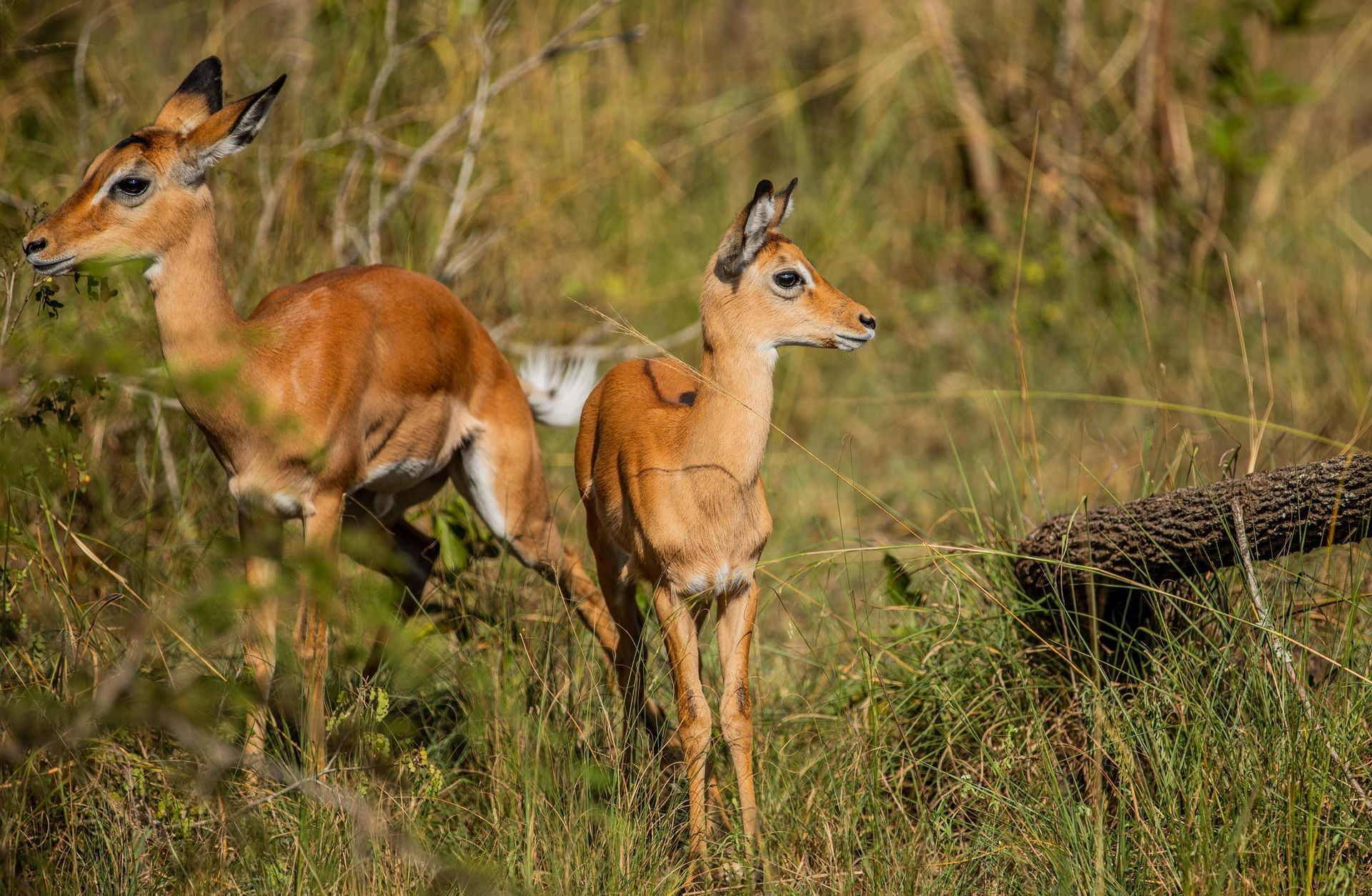
Opting to use a tour operator to plan a safari to Rwanda or Uganda has multiple benefits. Why use a tour operator to plan a safari in Uganda, Rwanda, ora anywhere in East Africa? Among the reasons why you should use a tour operator or company to organize your safari include safety, connections, planning, detailed information, negotiation, value for money, and more. Reasons why you should use a tour operator to plan a safari to Uganda or Rwanda Using a tour operator/company such as Mist Rwanda Safaris to plan your next safari holiday guarantees you a number of benefits. Reasons to use a tour operator to plan a safari; Planning Planning a successful Rwanda safari or Uganda tour requires the knowledge of other experts, especially those on the ground. Choosing a local tour operator/company such as Mist Rwanda Safari to plan your vacation guarantees you detailed info about your trip. We can provide a detailed travel itinerary, logistics, and means of transportation for your connectivity to and from the destination. Planning a trip involves putting together a number of aspects and is best done through the local tour operator. Value for money Everyone on the safari to Uganda/Rwanda desires a trip that guarantees him/her value for money. This is achievable if you plan your vacation through the ground tour operator or company in Rwanda or Uganda. Local tour companies have contacts with other service providers and can easily connect with each other. Everything done through the local tour operator is done with ultimate care and attention to services that guarantee visitors value for their money. Negotiation The tour operators are free to negotiate for better rates with suppliers or accommodation managers. They fall under their umbrella and the beauty about it is that they can negotiate for good rates unlike when you do it as an individual. What is important is that you share your travel plans and we shall guide you appropriately. Safety and trust It is generally safe and secure to plan and book a safari in Rwanda/Uganda through the tour operator. At Mist Rwanda Safaris, we prioritize visitor safety and security as they get around Rwanda. Besides, visitors’ finances are also safe with trusted tour operators. Often, visitors encounter challenges when they plan their trips on their own. They land in several scammers and after it is when they think of dealing with the tour operator. You can avoid such scenarios from the very start of planning your safari. This applies not only to the visitors in need to explore Rwanda or Uganda but also to those planning to visit any part of the world. Knowledge and experience The tour operators have vast knowledge and experience about visitor travel desires, the destinations, activities, and safety of the area and can provide travel advice. The tour operator can put together an itinerary encompassing what you are interested in. This is of great value to visitors who plan to unearth Rwanda or Uganda in depth. Besides, it saves you the stress of finding destinations, routes, things to do, and a lot. Tour operators provide guidance based on their actual experiences on the ground. Saves time & money Planning and booking a safari can be time-consuming and all require money to put things together. If it is your first time to plan a trip, higher chances are that you can easily be caught by time. A lot must be put together before the actual vacation however, with the help of the local tour operator such as Mist Rwanda Safaris, you don’t need to worry about anything. Our team is readily available to plan and book a trip for you to any destination in Rwanda and Uganda. Dealing with our expert saves you, especially when it comes to coordinating the travel plan, safari activities, trip itineraries, and other aspects that are essential in making your vacation complete. Stress-free Planning a safari through a tour operator saves you the stress, especially considering the long process involved. There are multiple steps to be met when planning a tour for instance if you are interested in gorilla trekking, a gorilla permit is to be booked. The process of getting the permit is a bit tedious and requires someone on the ground. Using a tour operator can save you a lot on this, a reason you should contact us via info@mistrwandasafaris.com . Convenience Using a tour operator is more convenient than planning a trip yourself. The process of planning involves spending some time researching about the destinations, activities, attractions, and more. You won’t have this time to go through all that and it is a reason a tour company or operator is essential. Flexibility When you deal with tour operators, you can be guaranteed a flexible itinerary. You simply get in touch with the expert and you share what you need. Adjustments can be made to suit your travel dream in a destination you plan to spend your next vacation. Conclusively, using a tour operator to plan a safari is a way to go about your Rwanda tour or Uganda safari. Contact Mist Rwanda Safaris the experts when it comes to planning captivating safaris to Uganda or Rwanda.
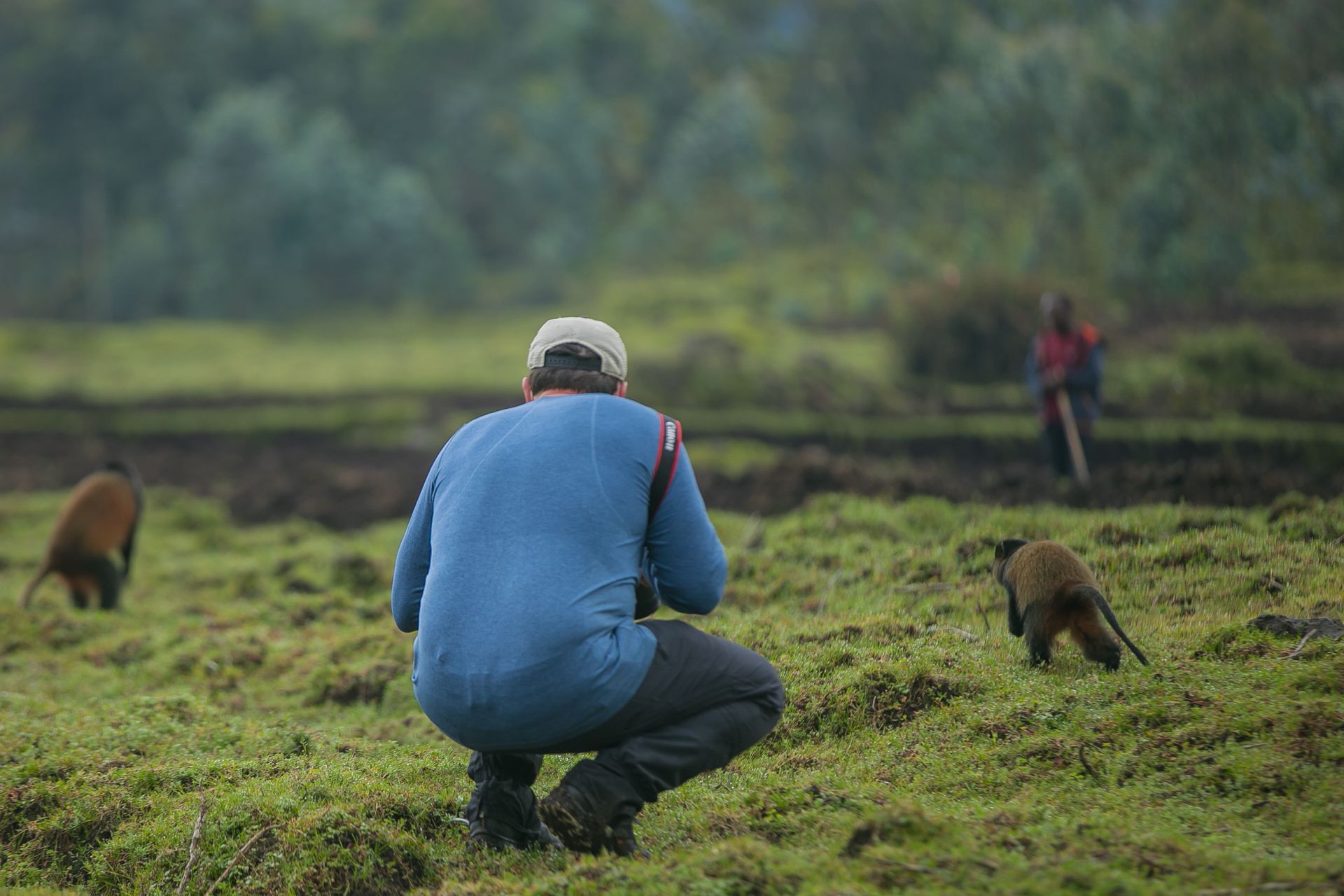
Golden monkey tracking in Volcanoes National Park is the second most thrilling primate adventure you should expect on the Rwanda safari. It is such a thrilling adventure that guarantees you a captivating encounter with the strikingly spectacular golden monkey troops in their natural habitat. Golden monkeys (Cercopithecus mitis kandti) thrive in the Virunga Area in East-Central Africa and Volcanoes National Park is home to a significant population of these primates. In Volcanoes National Park, golden monkeys share the same habitat as the endangered mountain gorillas. This makes it possible to combine golden monkey tracking and mountain gorilla trekking. Volcanoes National Park Ruhengeri comprises 2 habituated troops that are available for trekking. These exist in the bamboo-dominated area the troops comprise about 80 individuals. Golden monkeys survive in the lush bamboo vegetation just at the base of the Virunga Volcanoes. Visits are conducted on already habituated golden monkey troops and visitors are accompanied by professional park ranger guides. How Golden Monkey Trek is conducted in Rwanda Golden monkey tracking is conducted in already habituated golden monkey troops. The day trek starts with a briefing at the Kinigi area where you get to learn about the golden monkey tracking rules. The official will also allocate golden monkey troops to visitors then the real adventure starts at around 8:00 am. There will be an experienced park ranger guide to accompany you on the search for the troop of golden monkeys in Volcanoes National Park. The trek with Rwanda golden monkeys can take about 2-4 hours although this may vary depending on where these primates live, the nature of the habitat, and visitor fitness levels. A valid golden monkey permit is required for anyone with plans to engage in guided golden monkey tracking in Volcanoes National Park. Securing a golden monkey permit allows you to participate in a trek to explore golden monkeys in the wild. The cost covers the park entrance fees, golden monkey trekking experiences, and the service of the park ranger guide. How much is a golden monkey tracking permit in Rwanda A valid Rwanda Golden Monkey permit can be booked at USD 100 per person. The golden monkey permit can be obtained through Mist Rwanda Safaris. At Mist Rwanda Safaris, we make the process of planning your Golden Monkey tour and also booking permit easier without you engaging in the numerous steps. Ensure that you have your golden monkey tour and permits booked in advance at least 2-6 months before the actual date of visiting to explore more about golden monkeys. What to pack for Rwanda golden monkey tracking The list of essentials to carry for your golden monkey tracking tour includes long-sleeved shirts, a waterproof daypack, a good camera without a flashlight, a tin insect repellent, a pair of binoculars, gardening gloves, a safari hat, bottled drinking water, a rain jacket, long trousers, a pack of lunch, and others. The best months for a golden monkey tracking tour in Rwanda Golden monkey tracking tours can be organized and enjoyed at any time of the year. But to be on a safer side, golden monkey treks are best done during the peak dry months of the year. There is a long and short dry season to consider when planning for a golden monkey tracking trip in Rwanda and other destinations. The longest dry season runs from June to September then the shortest dry season starts from October to November. Embarking on the golden monkey trek during the dry season is advantageous in that you can enjoy a trek free from the disruptions from the rains. The floor can be kept drier with less dense vegetation which offers you a chance to take clear pictures of golden monkeys as they are immersed in the jungle. The wet months on the other hand experience heavy rains and support abundant growth of forage which golden monkeys depend on. However, the heavy rains experienced make the ground or forest floor impassable due to mud and slippery steep slopes. Additional activities to do Volcanoes National Park is one of the unusual destinations that guarantees visitors great experiences beyond golden monkey tracking. The park is also most popular for mountain gorilla trekking, birding or bird watching, Volcano hiking, and Dian Fossey tomb hike/trek. Most of these activities can be enjoyed together with the golden monkey tracking in Volcanoes National Park and beyond. This is possible especially when you plan and book a trip through Mist Rwanda Safaris. What else to see Besides golden monkeys, Volcanoes National Park also provides refuge to black and white colobus monkeys, spotted hyenas, bushbucks, black-fronted duikers, buffaloes (Syncerus caffer), elephants, and mountain gorillas. Birds – a total of about 200 species of birds call Volcanoes National Park their home and include the majority of the Albertine Rift endemic species. Top birds to identify on birding in Volcanoes National Park include the Kivu ground thrush, stonechat, Rwenzori turacos, black-crowned waxbills, Baglafetch weaver, and Rwenzori double-collared sunbird. Where to stay on a golden monkey tracking tour in Volcanoes National Park Accommodation options to consider for overnight on Rwanda golden monkey tour range from budget to luxury. Top lodges to book for overnight stay include Mountain Gorilla View Lodge, Virunga Lodge, One&Only Gorilla Nest, Best View Hotel, Le Bambou Gorilla Lodge, La Palme Hotel, Five Volcanoes Boutique Hotel, Le Bambou Lodge, Kinigi Guesthouse, Villa Gorilla Garr Hotel, Faraja Hotel and Bisate Lodge. Getting to Volcanoes National Park Ruhengeri Volcanoes National Park Ruhengeri is accessible by road/air. Road travel to Volcanoes National Park takes about 2-3 hours starting from the heart of Kigali city. Visitors can also connect to Volcanoes National Park from Kabale via the Katuna border or Kisoro town through the Chanika border crossing. Driving from Kabale/Kisoro to northwestern Rwanda to visit Volcanoes National Park takes about 3-4 hour’ drive. Visitors also have the option of taking a flight and this can be using a scheduled helicopter flight. The helicopter flights take off from Kigali International Airport to Musanze Airstrip and are operated by Akagera Aviation. It takes visitors the shortest period to get to Musanze Airstrip where you can connect to the park by road.
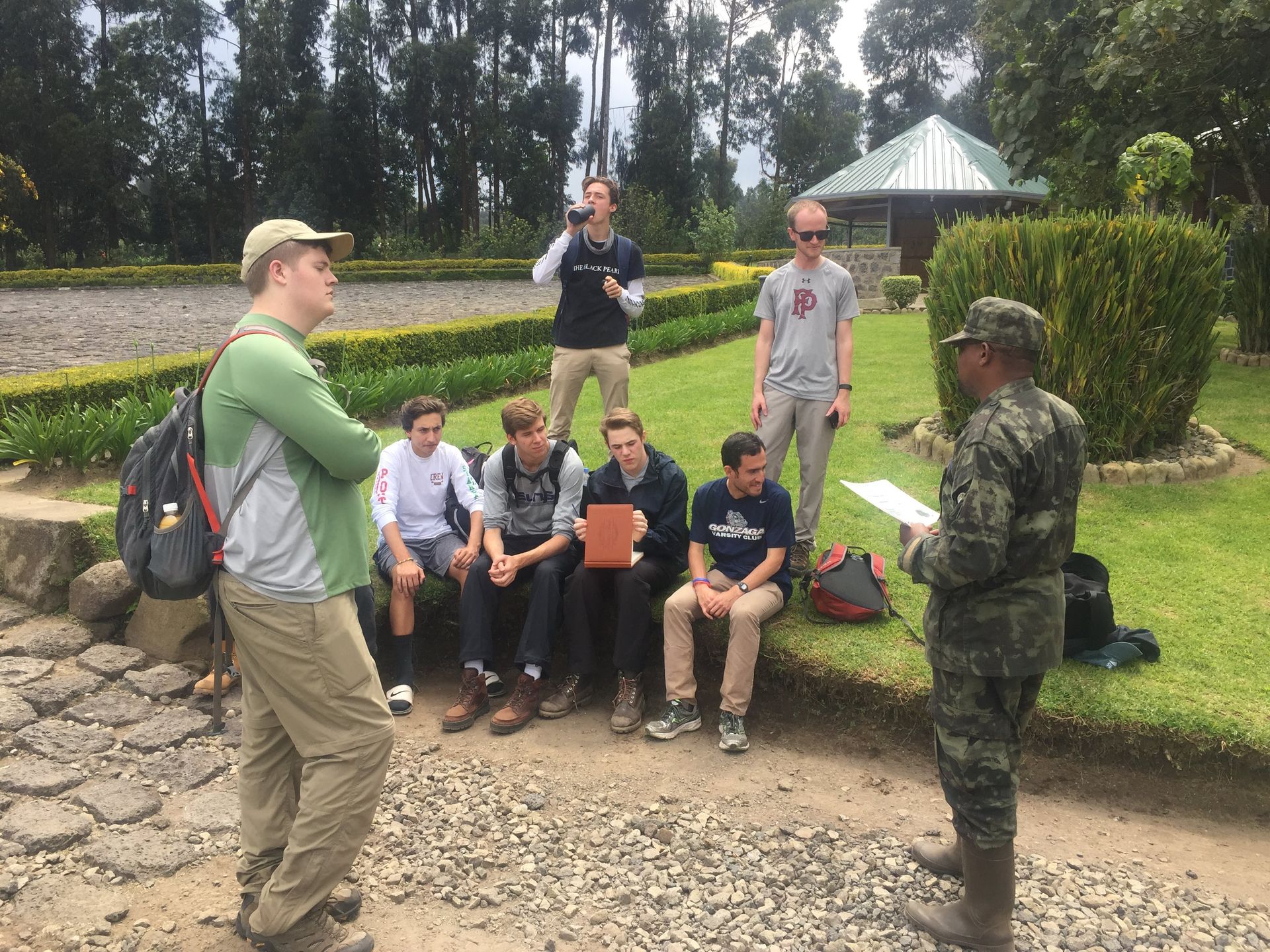
Want to visit Uganda or Rwanda to see mountain gorillas and you are not certain about how much a gorilla safari costs? Knowing exactly how much a gorilla safari costs can be challenging, especially when it is your first time. Here we uncover facts about the cost of gorilla safaris in Uganda and Rwanda. Our comprehensive covers several factors that often determine or affect the final cost of a gorilla trekking tour including the cost of gorilla permits, transportation, accommodation/gorilla safari lodges, and other expenses. Detailed breakdown of a gorilla safari cost When you think about embarking on a gorilla safari, you should have an idea of how much it is likely to cost. Please note, that the figure provided in this article is basically an estimate to guide you when planning your Rwanda gorilla safari or Uganda safari to trek mountain gorillas. Length of stay at the destination The cost of a gorilla safari generally varies depending on how many days you intend to spend in the destination trekking gorillas. All gorilla safari destinations in Africa favor as short as 3 days gorilla tour to 5 days gorilla safari and this can be in Uganda or Rwanda. On average, a midrange gorilla trip can cost USD 2400 per person and a luxury costs USD 4500-7000 per person. The cost of gorilla trekking covers the cost of purchasing a valid gorilla permit, meals, accommodation, and transportation, plus the rest of the other expenses aimed at making you realize a successful gorilla trekking adventure in Uganda/Rwanda. Cost of accommodation Accommodation is a must to be booked for you to have a successful gorilla safari in Uganda/Rwanda. Depending on the location you plan to engage in a gorilla trekking adventure, the lodges to book for an overnight stay may cost around USD 100 per night for a budget and a luxury can cost USD 3,000 per night. A midrange gorilla lodge facility may cost USD 1500 per night. The cost of accommodation always has a huge influence on the overall gorilla safari budget. Transportation cost Transportation to and from your gorilla safari destination must be planned for. Rental cars are the most reliable means of transportation for your connectivity to and from your respective gorilla trekking destinations in Uganda and Rwanda. A private tour vehicle to consider for your travel in Uganda and Rwanda can be hired at USD 150 to USD 250 per day. You can hire a car in Uganda/Rwanda for guided gorilla safaris in Rwanda/Uganda or for self-drive road trips. In the case of self-drive tours, you must inquire from your local tour operator if the cost of hiring a car covers the cost of fuel. Tour operator The cost of a gorilla safari also varies depending on the tour operator you intend to plan your trip with. The overall cost of a gorilla safari is never standard across the tour operators. Tour operators exist in 3 categories; budget, midrange, and luxury. Choose a local tour operator that is reliable and offers budget-friendly gorilla safaris like Mist Rwanda Safaris. Cost of gorilla permit The cost of a valid gorilla permit varies from country to country where gorilla trekking is done. A valid Uganda gorilla permit costs USD 800 per person and this was effected starting 1st July 2024 applying to all foreign nonresidents, USD 700 per person for foreign residents, and UGX 300,000 for Ugandans, Rwandan visitors, Kenyans, and Tanzanians (East African citizens). The Rest of Africa travelers with plans to visit Uganda/Rwanda to track gorillas need USD 500 to secure a valid gorilla permit. Summary: Foreign nonresidents USD 800 per visitor. Foreign residents USD 700 per visitor. East African citizens UGX 300,000 per visitor. Rest of Africa (ROA) USD 500 per person. The breakdown of the gorilla habituation permits; USD 1500 per visitor for all foreign nonresidents. USD 1000 per person for the foreign residents. UGX 750,000 per visitor for all East African citizens. Rwanda gorilla permits are open for booking at USD 1500 per person. Like Uganda permits, gorilla permits in Rwanda should be booked in advance. Contact Mist Rwanda Safaris not only to book a gorilla permit but to plan the entire gorilla tour to Uganda or Rwanda. Other expenses –especially on items to pack Where you are required to purchase items to be packed for your Rwanda gorilla tour or Uganda gorilla safari, such expenses also influence your overall cost of gorilla trekking. Often, the key items to consider for your gorilla trekking adventure besides permits include long-sleeved shirts, trousers (should be environmentally friendly), waterproof daypack, insect repellents, waterproof hiking or trekking boots, a camera, first aid kit, and many others. When to visit When you plan to travel to track gorillas also matters a lot and influences the cost of the gorilla safari in Uganda/Rwanda. The dry season for instance is considered as a peak season when the cost of accommodation and transportation often remain the same. It is hard to get discount offers during the peak dry months like it is during the low or off months of the year. The peak months of the year begin from June, July, and August to September then another phase starts from December, January to February. Where to visit to track mountain gorillas in Uganda and Rwanda There are 2 parks to consider a must-visit for mountain gorilla trekking in Uganda alone. The gorilla safari destinations to consider visiting in Uganda include Bwindi Impenetrable National Park and Mgahinga Gorilla National Park. Bwindi and Mgahinga National Parks are lying in the far Southwestern end of Uganda, and are accessible about 8-9 hours’ drive in a 4x4 safari vehicle. This is for visitors with plans to begin their road trips from the heart of Entebbe city or Kampala capital city. Connecting from Kigali to Bwindi/Mgahinga is also possible and involves crossing via the Katuna or Chanika border area. The road trip from Kigali to Bwindi/Mgahinga takes between 4 and 5 hours. A successful road trip from Kampala or Kigali to Bwindi/Mgahinga requires a 4x4 tourist vehicle. By air, you can also reach Bwindi/Mgahinga by flight starting from Entebbe International Airport (EBB) or Kajjansi Airfield. The flights take between 1 and 2 hours to Kihihi or Kisoro airstrips. Volcanoes National Park in Rwanda is another special destination for mountain gorilla trekking. Traveling from Kigali to Volcanoes National Park Ruhengeri takes about 2-3 hours’ drive and still, you require a 4x4 safari vehicle.

Wondering if you need a visa to visit Rwanda? A visa is one of the essential requirements you need to visit Rwanda. Rwanda visas must be obtained by all citizens or travelers/tourists from countries not from visa-exempted states. In this article, we bring you detailed information about Rwanda's visa, cost, visa-exempted countries, how to obtain a visa, and why you need a visa to visit Rwanda. Do I need a visa to visit Rwanda? Yes, you need a visa to visit Rwanda. A Rwanda visa is an essential entry requirement for tourists with plans to explore the different attractions in the Land of a Thousand Hills or if you are traveling for business or other purposes. A valid visa is needed for you to enter Rwanda as a visitor. Citizens of a Commonwealth state can access a free 30-day visa on arrival to Rwanda. How to apply for a Rwanda visa The Rwanda visa can be obtained online through https://www.migration.gov.rw/ . But first, you should know the application requirements which include the type of visa you need, fees, and more. Essential requirements for obtaining a visa for Rwanda include a valid passport, and a completed visa application form, for EATV Visa applications, you can fill out the EATV application form, avail the tour agency/company trip itinerary in case there is any, provide supporting documents like hotel reservation, flight itinerary, invitation letter. Visas can be booked or obtained online or directly from the embassy. For instance, those in the USA can visit and apply for visas through the Embassy in Washington D.C. You submit your application form in person or by post. When applying via the Embassy in Washington D.C, you need to include eligibility, validity, fees, type of visa, prepaid FEDEX self-addressed traceable return envelope, and applicant’s valid passport. Fees and duration per visa Tourist visas and family visas are valid for 30 days and available for single entry. The cost for this kind of visa is USD 50. Multiple-entry visas cost USD 70 and do not apply to tourists on Rwanda tours. Diplomatic visas valid for 30 days for single entry visas are available free of charge. Conference visas valid for a month for single entry visas cost USD 50. East African visa valid for 90 days for multiple entries cost USD 100 per visitor. Reciprocity –available as long-term visitor visas valid for up to 10 years. These are available for American citizens holding valid American passports and can be booked at USD 160. You can apply for this category of visa via the embassy of Rwanda in Washington D.C. Rwanda visa-exempted countries Citizens from East African Community states require a pass or entry visa free of charge on arrival. The pass provided can be valid for 6 months. Another category of visitors who may have a chance to have a 90-day visa at no cost on arrival falls in the following countries; Chad, Guinea, Benin, Angola, Central African Republic, Sierra Leone, Philippines, Singapore, State of Qatar, The Federation of Saint Christopher and Nevis, Seychelles, Ghana, Haiti, Indonesia, Principe, Senegal, and Mauritius. Citizens from countries not visa exempted must apply for the visas through the Rwanda Diplomatic Mission of the country of residence or online before they depart for Rwanda safaris. Online applications also have the option of paying online or on arrival. You can contact your local tour operator for guidance to save time or talk to the visa authorities directly. What to do in Rwanda There are multiple things to do while in Rwanda provided you have access. Top things that attract visitors to Rwanda include mountain gorilla trekking. Gorilla trekking involves exploring mountain gorillas in the wild. Besides having a valid visa, you need a valid gorilla permit to engage in the exhilarating gorilla trek in Volcanoes National Park. Each Rwanda gorilla permit as of 2024 costs USD 1500 per person. Chimpanzee tracking and Canopy walking in Nyungwe National Park are among the top exciting activities awaiting you on the Rwanda safari. Visitors can also take a wildlife safari to Akagera National Park in the Eastern Province of Rwanda. There is also a chance to be part of the Kigali City tour, MICE, business trips, cultural safaris,
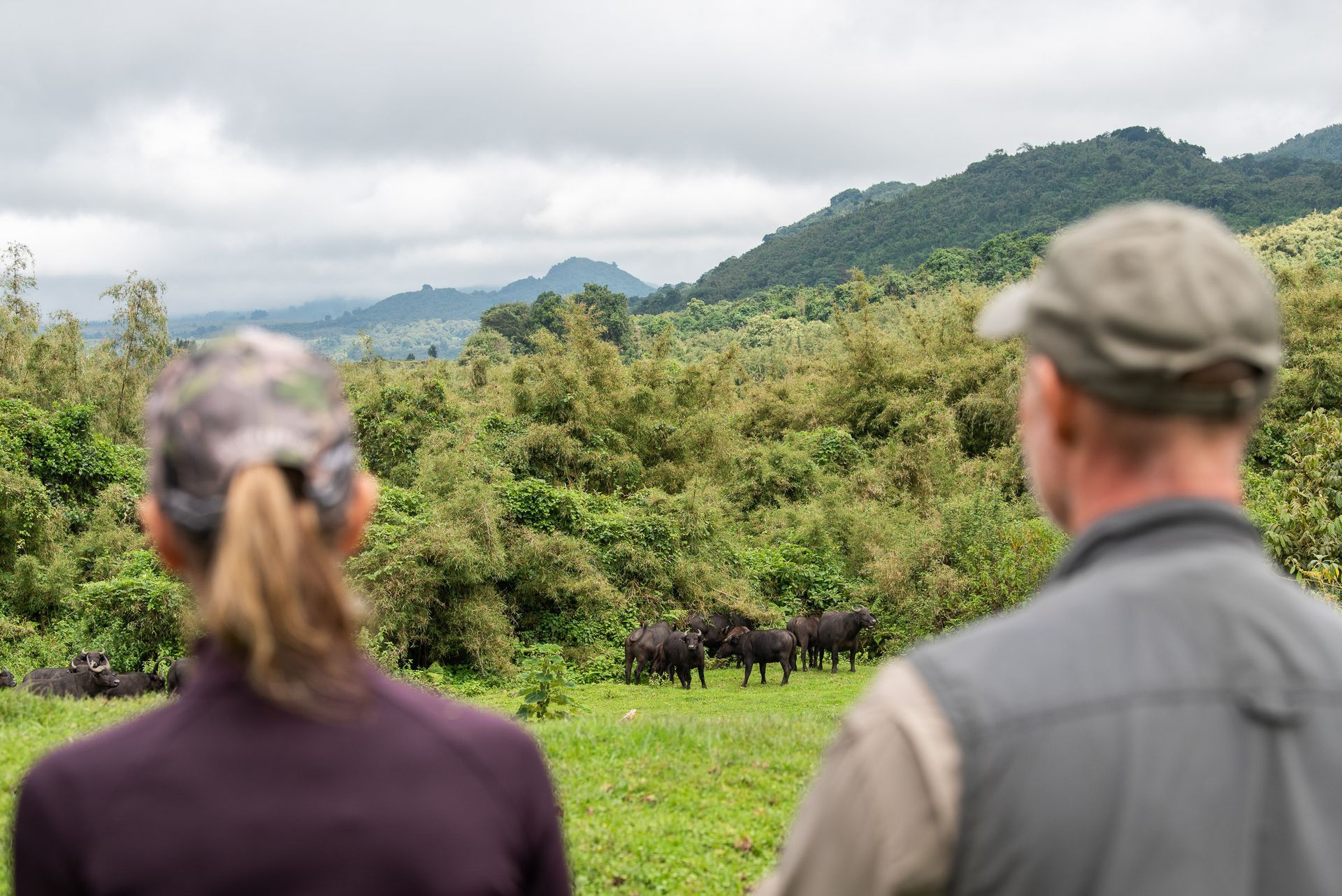
How hard is a gorilla trek in Uganda/Rwanda? Gorilla trekking is generally a physically demanding adventure. However, what is interesting is that most visitors have had successful gorilla treks in Uganda and Rwanda. Multiple factors often influence the nature of a gorilla trek rendering it hard/difficult. They include the terrain of the park/destination, altitude, weather, length, and when you intend to travel to track gorillas, etc. The terrain A gorilla trek in Uganda or Rwanda is conducted in the mountainous areas also characterized by dense forests and slippery/muddy trails. The entire gorilla trekking adventure involves trekking via the natural rainforest with an experienced park ranger guide in search of mountain gorillas. As you trek through the forest, higher chances are that you can come across muddy trails that pose slight challenges. Elevation of the area All destinations where gorilla trekking is conducted in Uganda/Rwanda have varying altitudes. Overall, gorilla trekking occurs at an altitudinal range of 2500 to 3000 meters. A complete hike through the rainforest and steep slopes may come with altitude sickness, a good reason you must do adequate practice to familiarize yourself with tough elevations. Length of the gorilla trek A gorilla trek varies depending on how long it can take you. A normal gorilla trekking session can last for 2 to 6 hours and this depends on the location of mountain gorilla families and your speed of walking through the forest. The length of the gorilla trek may also be influenced by the nature of the habitat. Weather/when to visit When you plan to embark on the gorilla trek can impact the difficulty of the trekking adventure. Trekking gorillas around the rainy or wet season often poses a huge challenge for gorilla trekkers. The wet season usually comes with heavy rains and the ground can be left muddy or slippery while the vegetation can be dense. All these factors render a gorilla trek hard. Fitness level & age consideration for gorilla trekking If you are planning to go on a gorilla trek tour, be aware of the acceptable age limit and fitness level required. Your fitness level matters a lot for you to have a complete cycle of gorilla trekking. You need to be fit enough to undertake a gorilla trek and by standard, a minimum age limit for this adventure is 15 years and above. Anyone from 15 years can engage in a gorilla trek even the elderly. Visitors as old as 60 years have had successful gorilla trekking adventures in Uganda and Rwanda. The beauty of it is that there are favorable options to cater to elderly persons or tourists with fitness challenges. This includes the allocation of the easier-to-trek gorilla groups, and hiring porters and carriers or stretchers. Why the minimum age? The minimum age is set at 15 for a good reason. First, it is believed that anyone above fifteen years is grown up, mature, and fit enough. A gorilla trek in Uganda or Rwanda takes a good number of hours to make a round adventure. But as an individual, you can also make pre-preparations to acclimatize yourself with the high elevation, and on the actual trek, you won’t have any altitude sickness. You can do as much exercise as you can. Location of gorilla families in Uganda and Rwanda Gorilla families in Uganda are available for gorilla trekking in any of the five areas. They include 4 regions in Bwindi National Park that is Ruhija sector, Buhoma, Nkuringo, and Rushaga area. In each of these sectors, there are already habituated gorilla groups to explore during a gorilla tour. Over 24 habituated gorilla groups exist and are open for trekking in Uganda alone. They include the Mucunguzi gorilla group, the Nshongi group, the Bitukura gorilla group, the Rushegura group, the Nkuringo gorilla family, the Mishaya group, Mubare, Katwe, Christmas, Habinyanja, Kutu, and more. Visitors on a gorilla tour in Mgahinga can only explore the Nyakagezi gorilla group. This is the only group that is open for gorilla tourism and a single trek attracts only 8 visitors per day. Tips to a successful gorilla trek Always be prepared for the tough terrain Gorilla trekking isn’t the usual nature walk in the savanna but a whole trek through the tropical rainforest. As you trek, expect to pass anywhere with no defined trails/paths. To be ready for your terrain experience, expect to come with strong and sturdy hiking boots to help you walk through the rough, slippery steep slopes and muddy ground. Safeguard yourself Carry a long-sleeved shirt, gardening gloves, and other essential safety gear because it is a long trek through the jungle with thorny and itchy plants, etc. Book a gorilla tour in advance. Contact your local tour operator (Mist Rwanda Safaris) to plan and book your gorilla vacation in advance. Booking a gorilla trip early allows you to prepare for your actual gorilla trekking adventure in Uganda or Rwanda. You can use the available time to exercise or practice to keep you fit for the actual trek with mountain gorillas. Hire porters You need porters to assist you with heavy luggage and you concentrate on your trek. A gorilla trek with heavy luggage can be stressful considering the nature of the habitat and the general altitude of the park you visit for gorilla trekking. Porters are always present at the park offices where you get briefed about the rules and regulations for gorilla trekking. A porter can be hired for a single gorilla trekking session at USD 15-20 per person. Travel during the dry season While gorilla trekking is considered an all-year-round primate adventure, the dry season is the best period to consider visiting Uganda or Rwanda for you to have a successful gorilla tour. The dry season occurs twice a year with the longest dry months recorded around June, July, August, to September while the short dry months begin from December, January to February. Conclusively, gorilla trekking is generally challenging but with adequate preparation, you can have a trek with mountain gorillas without any disruptions. Visit Uganda and Rwanda to track mountain gorillas and return when filled with lots of lasting memories. Contact our team to plan and book a gorilla trek tour in advance.
